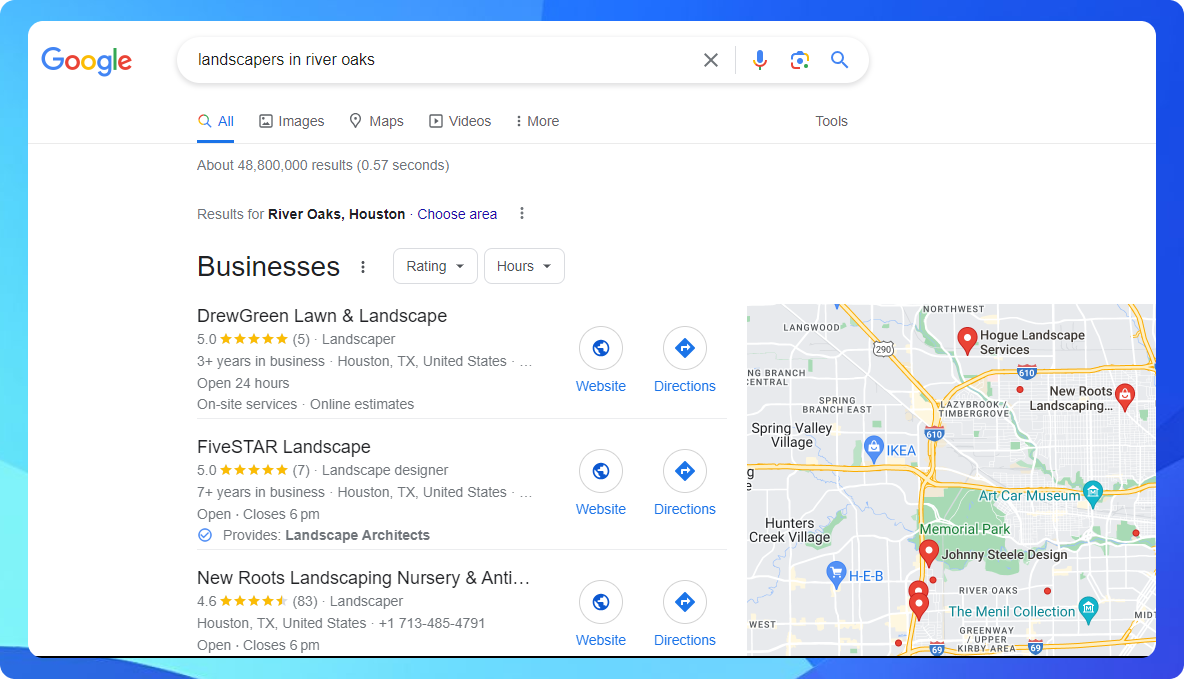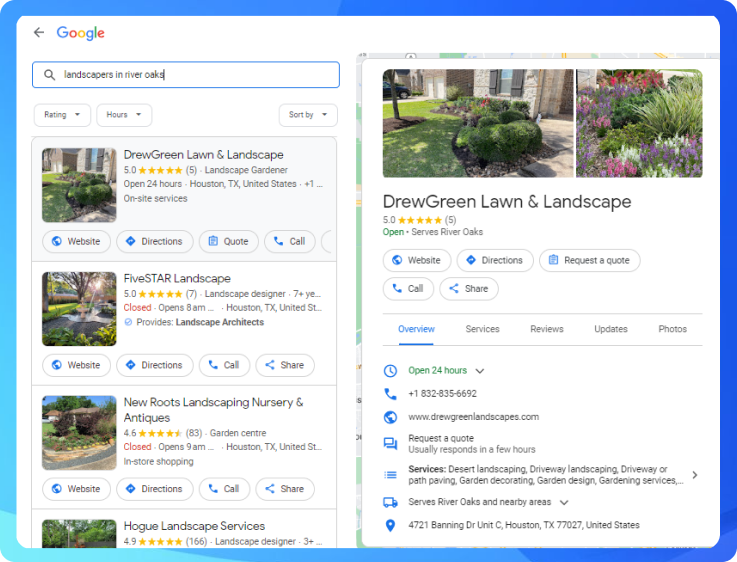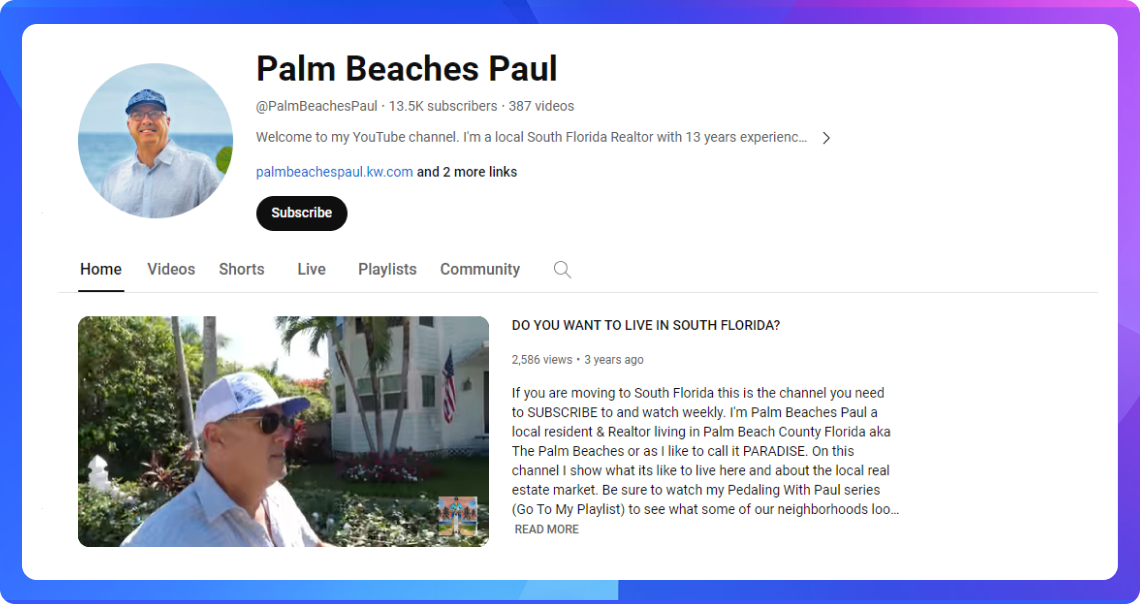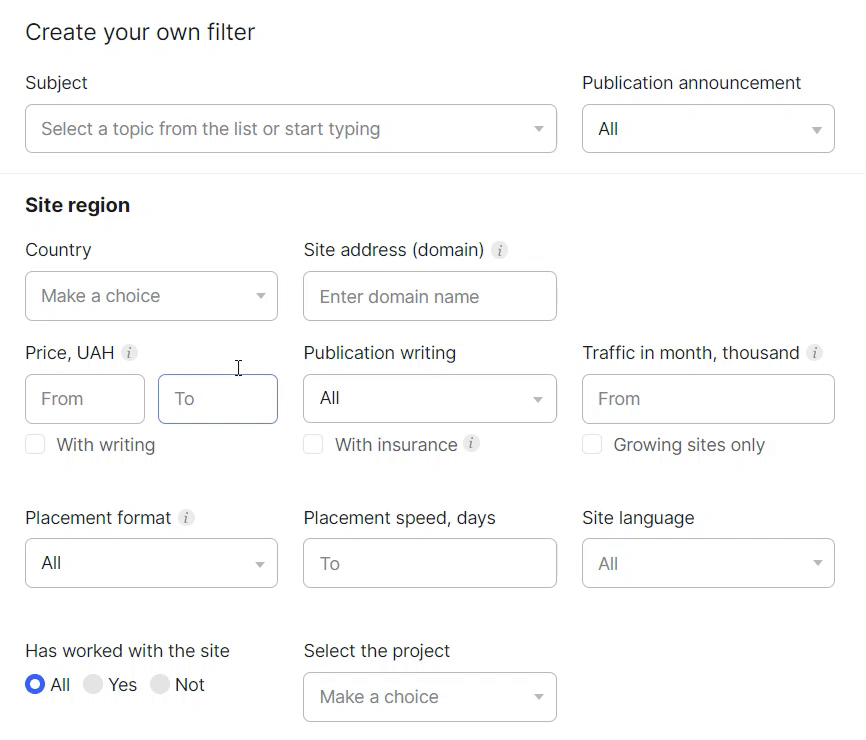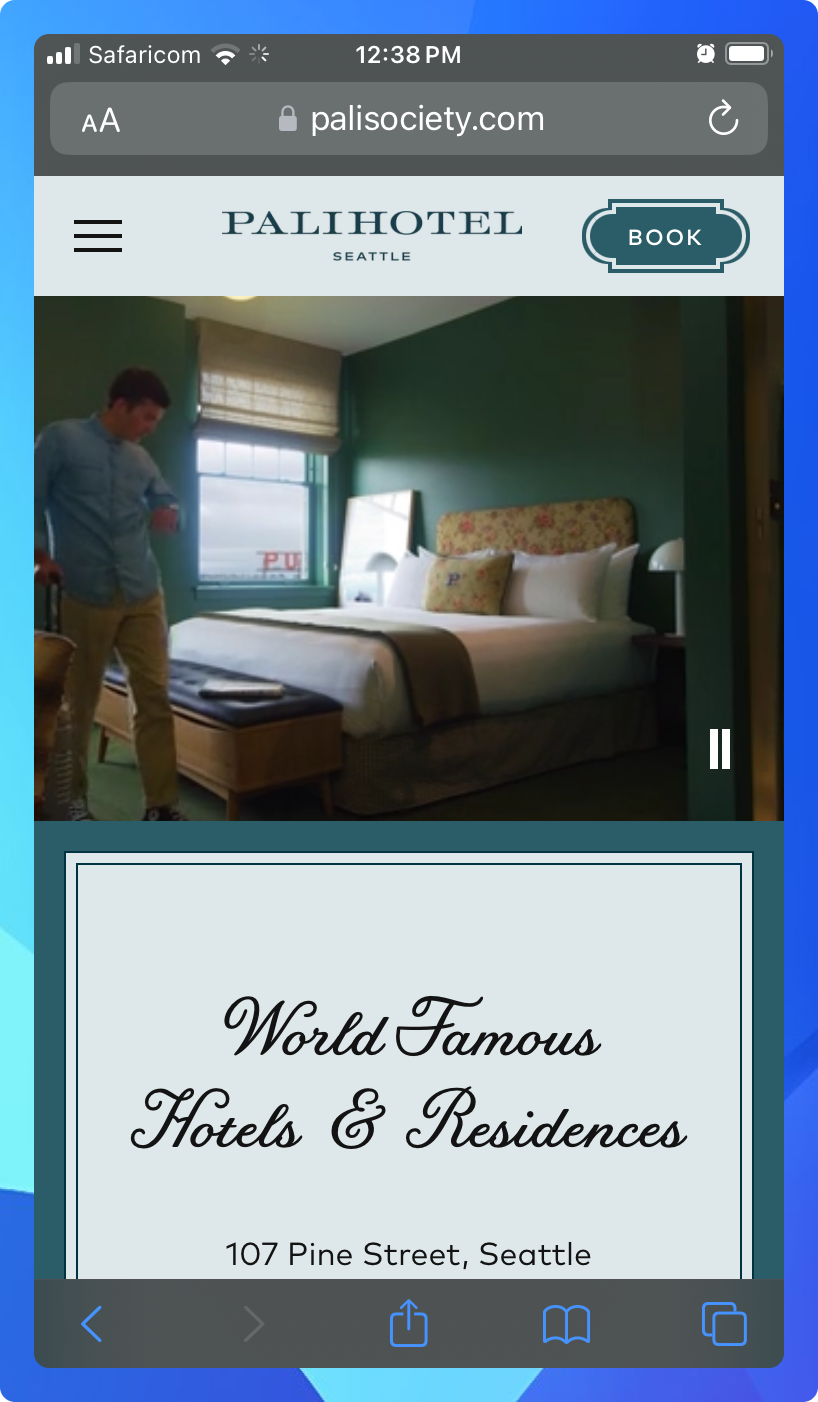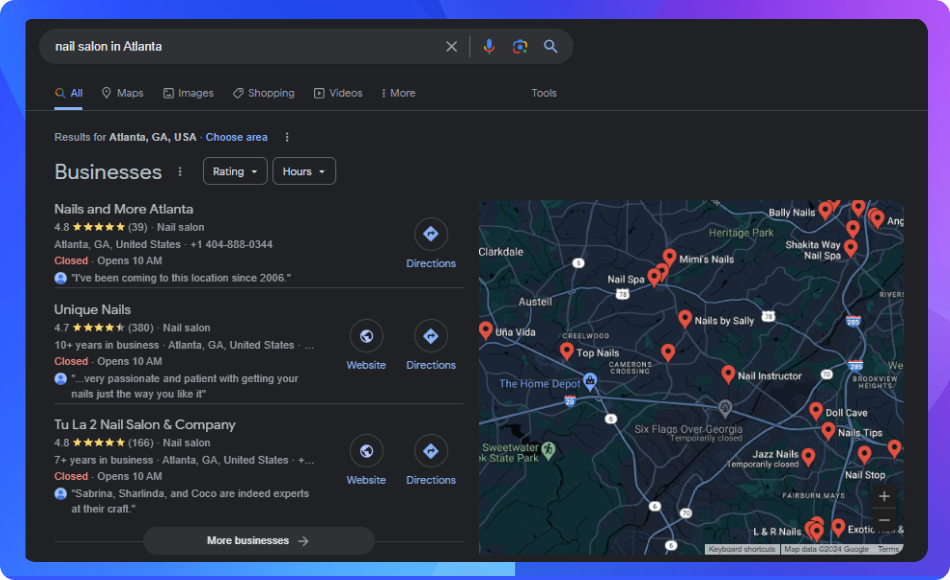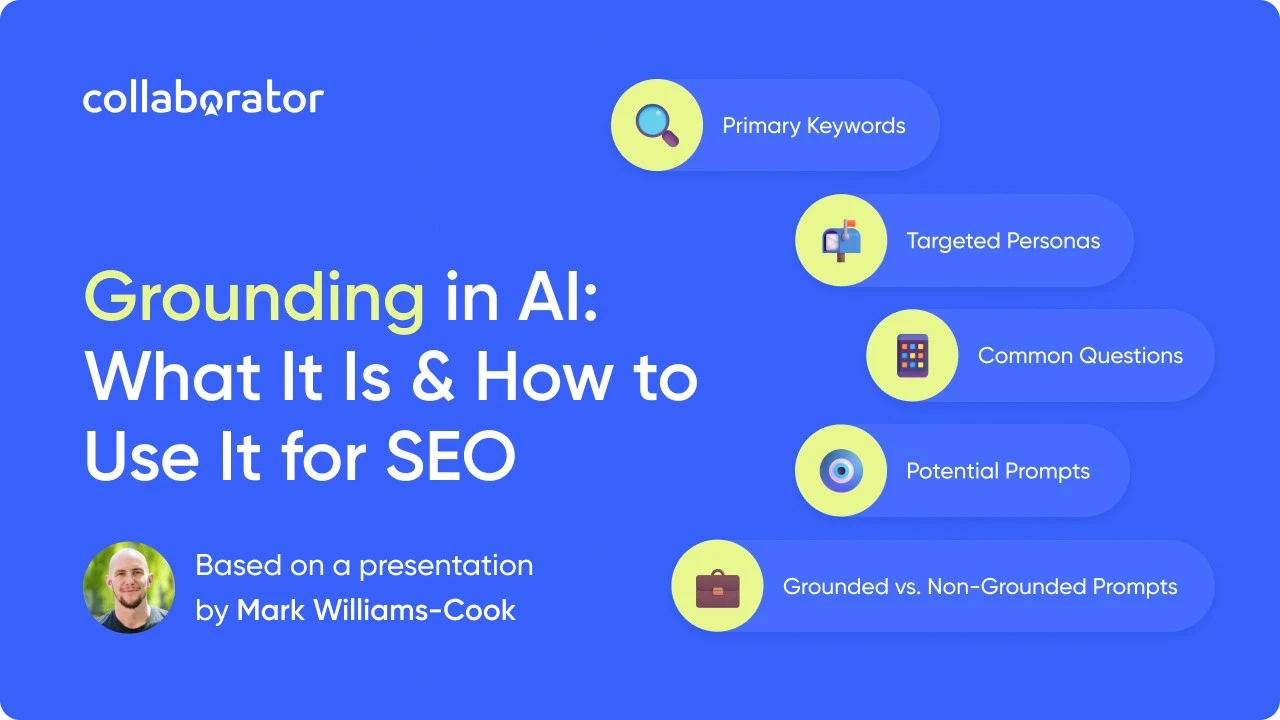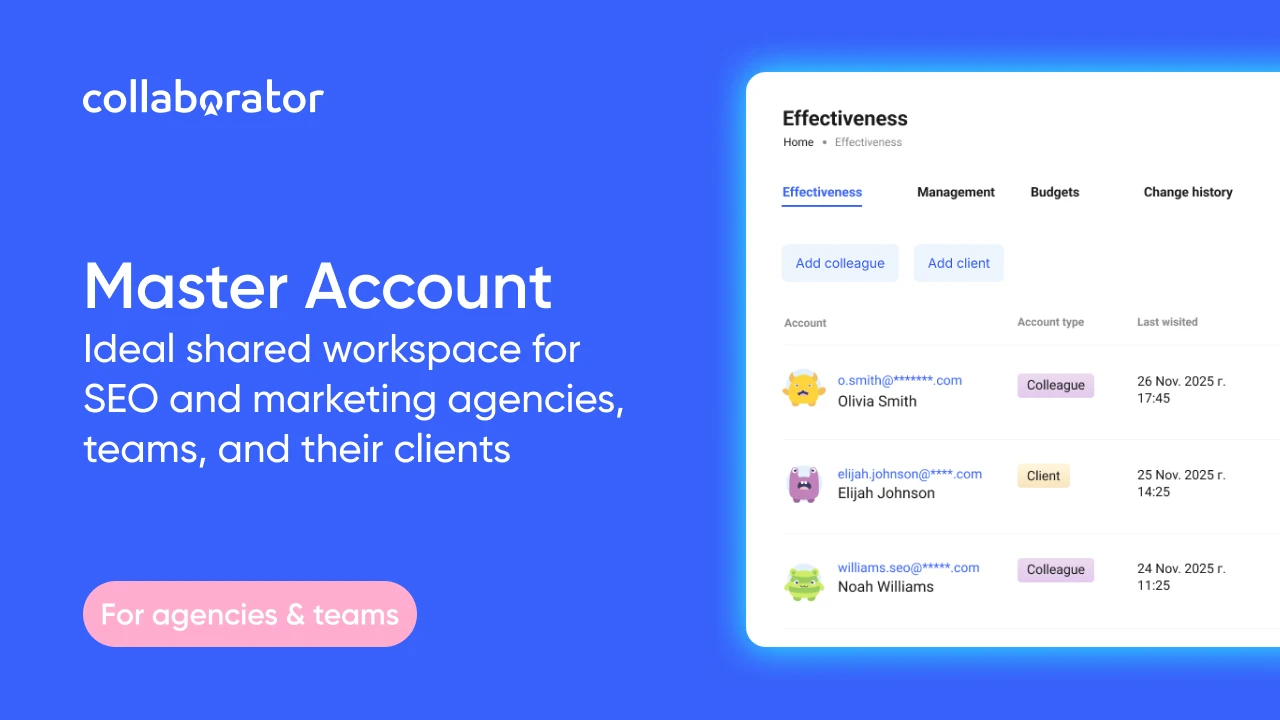
Online visibility is vital to a company’s success. The more visible your business is on search engine results, the greater your ability to attract new customers. However, competition is stiff, especially with big-name companies and online businesses.
Fortunately, there are ways to level off the playing field, or at least improve visibility in your community. Local SEO optimizes your website so potential customers can find your products and services through location-based keywords. When a customer searches for ‘vintage shops near me,’ these local businesses populate the first page of the search results.
And there’s more good news. 46% of Google queries are local searches. That’s a tremendous opportunity to drive traffic, leads, and conversions.
We’ve put together five local SEO tips and show how to use Collaborator to boost your website visibility.
What Is Local SEO?
Before we answer this, let’s review the definition of SEO. Search engine optimization (SEO) is the process of improving your website to increase its visibility on search engines such as Google or Microsoft Bing.
The higher you rank on search engine results pages (SERP), the more likely you will be discovered whenever people search for products or services. The goal of SEO is to drive traffic to your website, which is pivotal to overall business growth.
Localized SEO focuses on people searching for products or services in a specific area. It involves optimizing your web pages for local searches so they appear when people use location-based keywords.
Search results for the query "Landscapers in River Oaks"
Let’s say a customer is looking for local landscapers. If your site is optimized for local SEO ranking signals such as citation and review signals, your site is likely to appear in relevant results. See above the top results for a local search for landscapers in the River Oaks, Houston.
Local search optimization doesn’t just help you stand out in online spaces. It’s also a helpful tool for business owners with brick-and-mortar addresses, such as restaurants and clinics. If your site appears in SERPs, people are likely to go to your physical store as well.
5 Proven Tactics to Skyrocket Your Website Visibility
Given that local searches make up almost half of all online searches, here are five local SEO tips guaranteed to skyrocket your website’s search visibility and get your business in front of local audiences.
1. Optimize Google My Business (GMB) listing
Google offers local businesses a free marketing tool to improve their online presence. A Google Business Profile account helps your company's organic rankings for local searches. Did you see what happened when I Googled “landscapers in River Oaks” above? The top results are the Google Business profiles of relevant companies.
But don’t just claim your GMB listing. You have to make sure your listing is optimized as well.
Let’s examine the business profile for the top result of our landscaper search earlier.
Google business profile of the DrewGreen Lawn & Landscape company
In addition to NAP (name, address, and phone number) citations, this profile highlights hours of operation, what they do, and who they serve. The online listing also details the company location, website, and other contact information.
To further optimize your Google business profile, you should:
- Verify your account to avoid duplicate listings
- Include relevant keywords in the business/services description
- Add images of your storefront or signage
Product discovery is part of the buyer journey. The easier it is for potential customers to find you, the better their customer experience. Complete and updated business profiles enable Google to provide the most accurate information to potential customers.
Unverified or incomplete profiles appear lower in the search results or not at all. Moreover, customers aren’t likely to choose your business if your profile lacks pertinent information.
2. Create localized content for your site
Content marketing is vital to SEO. Consistent, high-quality content positions you as a local expert in your industry, increasing your domain authority and search engine rankings. But that’s not all.
Businesses that publish blog posts regularly receive 55% more traffic than those that don’t. More organic traffic translates to, you guessed it, higher search rankings on the SERPs.
Because your goal as a local business is to get local audiences to your site, you want to ensure your content is relevant to them. Let’s say you’re a real estate company. You can create a news story about mortgage rates to educate home buyers about the local real estate market.
Palm Beaches Paul's YouTube channel
This realtor from South Florida, for instance, creates engaging content videos about what it's like to live in Palm Beach County. He talks about price points, amenities, attractions, etc., allowing potential buyers to envision their life in different neighborhoods.
Make sure your localized blogs aren’t just engaging. They should also incorporate relevant keywords. These are the words users type into search engines to get answers to their questions. Focus on fast-loading blog pages to engage your audience. A No-code tool like Nostra AI can help you achieve this with minimum effort.
With the right keywords, you can ensure your localized content appears in SERPs in the first place. SEO tools like Ahrefs can help you identify trending keywords in your region.
3. Build local backlinks
Every SEO guide will tell you that link building is crucial to organic search rankings. Google considers backlinks to be essential ranking factors in determining content quality. However, not all links are created equal. Only external links from trustworthy websites signal trustworthiness and authority, letting Google know your content should receive maximum visibility.
Local link building involves building links with prominent local websites. There are several ways you can do this.
- Guest blogging: You can earn at least one backlink to your web pages by creating blog content for guest posting websites.
- Identifying unlinked mentions: Social listening tools help you to find web pages that mention your brand. You can then contact the blogger and ask them to add a backlink to unlinked mentions.
- Adding your business in directory listings: Most online directories include backlinks to your homepage, allowing you to capitalize on qualified leads. Reputable listings also contribute positively to SEO ranking.
- Participating or sponsoring a webinar or podcast: Podcasts typically publish their content on their website and will include links to sources mentioned during the show, including guest information.
Here’s an example:
Vancouver Real Estate podcast on Trends for 2024
Realtor Beau Jarvis received a backlink to his company’s website for his appearance on the Vancouver Real Estate Podcast.
For your link-building campaign, it’s best to reach out to the relevant site administrators via email.
Management statistics show more than 50% of people check their emails every 20 minutes. That means, this way, the chances they’ll see your message are higher than if you sent them, say, a social media message.
Another method of obtaining the desired high-quality backlinks from authoritative online resources is to use the Collaborator service. It will allow you to streamline your link-building process and provide you with guarantees of quick publication and indexation of your content. Besides, each of your publications is covered with a free three-month guarantee from the removal of your guest post or press release. You can also go with an extended guarantee that lasts for one year.
So, let’s see how you can use this platform to simplify and streamline your link building campaign. After registration on the website, you can access a wide catalog of over 30K websites from all over the globe that accept guest posts and/or press releases. Surely, not all of them are appropriate for your local SEO strategy. To find the right ones, you can easily sort out online platforms available in the catalog using a user-friendly filter. Just specify the country, region, and city.
See how to do it below.
How to find the right website for your local SEO strategy in Collaborator’s catalog
Additionally, you can see a number of important SEO metrics for each website, including:
- DR (domain rating)
- Ahrefs rank
- URL rating
- Serpstat domain rank
- Trust flow
- etc.
After finding the right platform for content placement, you just add it to your cart and send an order to publish your post (some publishers can also write an article for you). The website owner accepts it and publishes your guest post or press release. If you want to discuss your order details, you can do so via an internal messenger on the platform.
So, let’s summarize: Collaborator saves you time and effort by providing authoritative local websites for content distribution and obtaining backlinks.
4. Optimize your website for mobile
According to Statista, 60% of internet traffic comes from mobile devices. So, if you’re not optimizing your website for mobile searches, you’re missing out on a large portion of your local target audience. That’s not all, though.
In general, Google primarily uses the mobile version of a site for indexing and crawling. This is called mobile-first indexing. That means whether you’re doing local SEO or not, you’re more likely to appear in search results if your site is mobile-friendly.
The best way to optimize your site for mobile is to have a responsive web design. Website design follows a horizontal layout. However, smartphones and tablets have a vertical orientation. The difference forces web designers to create separate web pages for desktop and mobile devices.
A responsive web design ensures dynamic websites that adapt to the user’s device screen orientation and size.
Here’s the mobile website for the Palihotel in Seattle.
Now, check out the desktop version.
The mobile version is streamlined and doesn’t have the text and navigational menu as the desktop version. This type of design improves the mobile user experience by reducing visual clutter.
When optimizing for mobile, make sure you also minimize pop-ups, optimize images, and videos as they negatively impact page loading speeds and increase bounce rates.
5. Encourage online reviews and ratings
Social proof is a lifeline for every business. People rely on online reviews and ratings when making buying decisions. These let them know that you provide value for money.
These two social proof stats drive the point home.
- 92% of consumers hesitate to buy products with no customer reviews.
- 87% of shoppers don’t consider businesses with less than a three-star rating.
But online reviews don’t just help boost your local business’ reputation (if they’re positive). They also impact local SEO rankings. A study by Moz found that review signals account for 15% of the ranking factors for local pack results. These review signals cover not just the quantity of reviews but also the quality, diversity, recency, and velocity (the rate at which one accumulates reviews).
See below the local pack results for the query “nail salon in Atlanta”:
Notice that the salons that figure in the results have a rating of at least 4.7 and at least 30 reviews. If you click on the reviews, you’ll see they’re diverse and were made pretty recently, too, with some made just a few weeks ago. The time gap between one review made and another, which speaks to the rate at which the reviews are accumulated (velocity), isn’t that long either.
So, for the best local SEO results, encourage customers to leave their feedback. You can share a link in post-purchase communications like emails so they can easily leave their comments on Google and other review sites.
Note that not all feedback will be positive. However, don’t ignore or delete bad reviews from customers.
Respond to as much feedback as possible as well. It shows current and future customers that you value their feedback. It follows that you shouldn’t forget to address complaints promptly and professionally, too, of course. If you need to engage the PR services of a reputable agency as early as now, do so. You don’t want a small issue to escalate into a huge nightmarish brand reputation event.
Conclusion
It’s almost impossible to compete with large brands on national-level SEO. However, with the local SEO tips in this article, you have a fighting chance by increasing your visibility to customers searching for services in your area.
All these tactics are proven to skyrocket your online presence. Claim your Google business profile and optimize it. Ranking for local searches is easier with complete and verified NAP details. Create SEO content local audiences will be interested in. To get a better understanding on how to localize your search engine optimization for a specific market, check out our article about SEO in German-speaking markets. Customers won’t find your business through organic searches without the correct types of content and keywords. Also, build local backlinks and encourage online reviews. Use Collaborator to streamline this process. Don’t forget to optimize your website for mobile.
SEO is a long and slow process. But with these local SEO tips, you’ll see a return on your efforts sooner rather than later.

